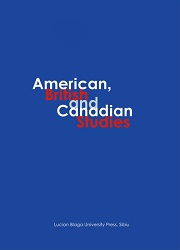Triangle(s) of Being: Linguistic (Coserian) and Semiotic (Peircean) Perspectives
Triangle(s) of Being: Linguistic (Coserian) and Semiotic (Peircean) Perspectives
Author(s): Dumitru Cornel VîlcuSubject(s): Epistemology, Semiology, Philosophy of Language, Phenomenology, Ontology
Published by: Editura Universitatii LUCIAN BLAGA din Sibiu
Keywords: linguistic relativity; significatum (signifié Bezeichnung); designatum (Bedeutung); sense (Sinn); eidetic intuition; intuitive filling (Erfüllung); (phenomenological) intentional object;
Summary/Abstract: This article envisages a possible tripartite division of (types of) being, in correspondence, one the one hand, to Eugenio Coseriu’s linguistic contents (significatum, designatum, sense) and on the other hand to Charles Sanders Peirce’s ‘participants’ in the process of semiosis (sign, object and interpretant). Being as eidos/ essence, corresponding to idiomatic significata, is responsible for the constitution of stabilities and/ or iterations within the otherwise perpetual flux of cogitata/ phenomena. Being as actual existence or particular, intentional object corresponds to the linguistic designata as they are produced through and by speech in the very linguistic act(s). Finally, being as ecstasis (in the Heideggerian sense of this term) or as sense represents the individual speaker’s ‘stance’ in the world, at the same time ‘opening’ it to interpretation by the others. Also, if on the levels of significata and designata language is simply/ purely logos semantikos, on the level of sense the three possible intents of the speaker (apophantikos, poetikos, pragmatikos) can be put into correspondence to the old/ traditional naming and understanding of temporal ec-stases as past, present and future respectively.
Journal: American, British and Canadian Studies
- Issue Year: 2023
- Issue No: 41
- Page Range: 46-72
- Page Count: 27
- Language: English
- Content File-PDF

